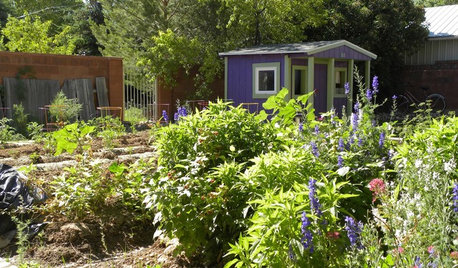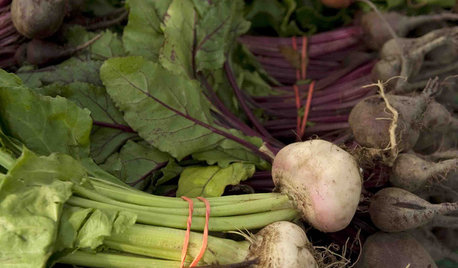Books on Heirloom Vegetables
jimster
19 years ago
Related Stories

SMALL HOMESMy Houzz: Heirlooms and Family Art Fill a 1920s Bungalow
Personal touches trump a huge design budget for a Florida couple with a taste for Americana
Full Story
DECORATING GUIDESVintage Modern: Featuring Heirlooms and Found Items
Can't Get Rid of It? Here's How to Create a Warm Mix of Old and New
Full Story
HOUZZ TOURSMy Houzz: In Brooklyn, Family Heirlooms and a Global Perspective
Family keepsakes, African art and black walls add character to a couple’s New York apartment
Full Story
FARM YOUR YARD9 Ways to Change Up Your Vegetable Garden for the Coming Season
Try something new for edible plantings that are more productive than ever
Full Story
EDIBLE GARDENSGarden BFFs? Why Your Vegetables Are Begging for Companion Plants
Foster friendships among plants for protection from pests, pollination support and color camaraderie
Full Story
HOUZZ TOURSMy Houzz: Bohemian Cottage and Vegetable Garden
Family heirlooms, original art and a verdant edible garden are at the heart of this eclectic cottage in southern Utah
Full Story
EDIBLE GARDENS8 Surefire Vegetables and Herbs for Beginning Gardeners
Learn the edible plants that are popular and easy to grow in a backyard or container garden
Full Story
FARM YOUR YARDCool-Season Vegetables: How to Grow Beets
Give canned versions of this fall and spring garden favorite the heave-ho and discover its true flavor and colors
Full Story
DECORATING GUIDESRoom of the Day: Black, White and Red All Over
Custom fabric, heirlooms, bold color and a beloved collection of books cozy up this farmhouse library
Full Story
ROOM OF THE DAYRoom of the Day: A Peaceful Library Serves as a Couple’s Retreat
Heirlooms, books and other meaningful items all have a place in this cozy Dallas room
Full Story






gardenlad
garnetmoth
carolyn137
canadiantomato
canadiantomato
jimsterOriginal Author
gardenlad
nascarmike
jimsterOriginal Author
canadiantomato
gardenlad
canadiantomato
carolyn137
carolyn137
nascarmike
gardenlad
garnetmoth
garlicgrower
jimsterOriginal Author